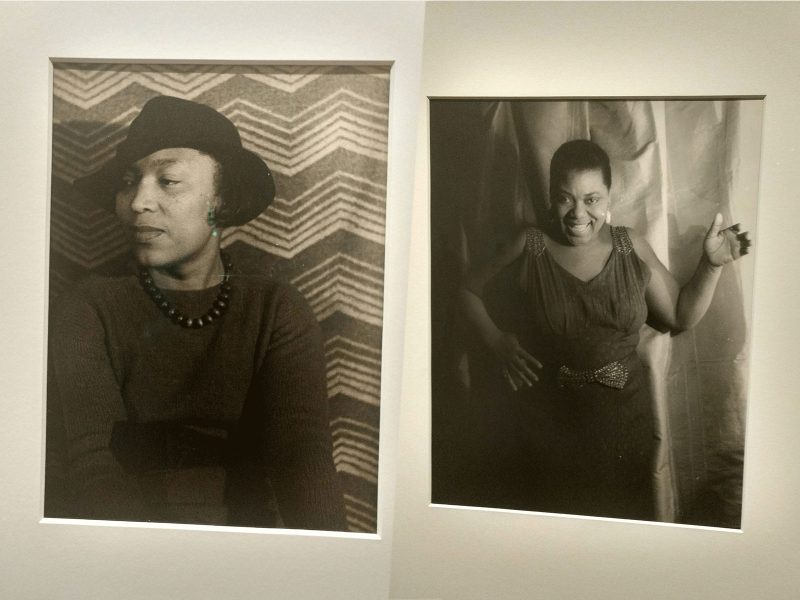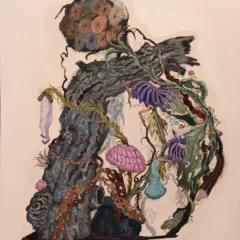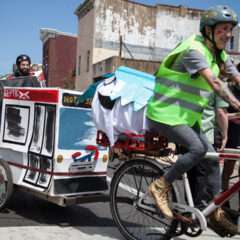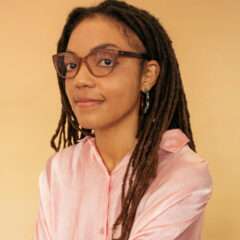
Missing Makers: The Historic Erasure of Black Photographers and Their Documentation of Other Black Artists
By Janyce Denise Glasper
“Black people should be the ones controlling images of themselves,” renowned cinematographer Bradford Young reflected to his friend, Color of Change’s Chief Storytelling Officer, Rashid Shabazz in their dialogue at the 6th Annual Blackstar Film Festival– a beautiful curated promotion of black vehicle images from around the globe.
Young’s stark words returned on a recent perusal of Philadelphia Museum of Art’s noir photography exhibit, The Portraits of Artists. [Face to Face: Portraits of Artists, June 26-Oct. 14, 2018, at the PMA.] Georgia O’Keefe, Marc Chagall, and Frida Kahlo are among the prized sitters posing with defiance and sophistication. The white authored lens then turns provocative attention towards brown and black bodies: Jacob Lawrence by Arnold Newman, Muhammed Ali by Sonia Katchian, a shrine of prominent figures by Carl Van Vechten. However, black artist documentarians are undeniably erased, their existence jarringly catapulted in this conversation that should have included their important contributions. The show– highlighting 150 years of artists and performers in photography– uses works from the museum’s collection, revealing a lack of progression and inclusivity.
“James Van Der Zee and Gordon Parks are important. They took the white man’s invention and used it on us,” Young declared.
The Portraits of Artists fills the voided black photographer absence with problematic Van Vechten, the white author of a pejorative titled novel. His photography reeks of privilege and wealth, lacking true depth and dignity beyond figure representation, similar to histories of marginalized brown and black bodies as muses for painters, rarely the artisan masquerade. Beneath the silhouettes and candid ordinariness posing for the white spectator, the owner and brand of these pictures, lies a desire to steal an essence of subjectivity and contain it through an art form few had accessibility to. Why is Van Vechten the only allowance of sharing black and biracial artists during such a significant time?
There is one Van Der Zee portrait. Yet, he has captured Jean-Michel Basquiat and Ali (Katchian’s) portrait has sole honor. Parks has photographed Louis Armstrong, Duke Ellington, Buddy Colette. Roy DeCarava is a tremendous absence for his portraits of Billie Holiday and John Coltrane. Morgan and Marvin Smith, identical twins, have a vast, impressive portfolio containing prolific artists such as Augusta Savage, Romare Bearden, and Ethel Waters.
Van Vechten’s portraits do not speak to black royalty, period, despite petulant longing. The art world complacency allows him entrance to photographic conversation for the sake of his black bodies oeuvre. Moreover, The Portraits of Artists direction by white male gaze with Van Vechten’s Billie Holiday as promotional tool illustrates the complicated layers beneath the surface value. Few women have pieces, and black artists fewer still.
All the Van Vechten’s, Newman’s, and Katchian’s in the world could never replace the validity of black photographers. Current black women artists Deborah Willis Thomas photographs Carrie Mae Weems and Deana Lawson documents Rihanna and the late Ntozake Shange, each artist declaring influence from Van Der Zee, Parks, and DeCarava. With the camera out of white hands, the art world has a responsibility to acknowledge the legacy of black photographer relationships to black artists. Thus, the Philadelphia Museum of Art and other primary arts institutions must expand their collections to reflect the current artistic climate otherwise it will be another 150 years of showing the same people.
Janyce Denise Glasper is an artist, writer, film/TV lover, and fair trade chocoholic. She enjoys figurative painting, drawing, and printmaking. In addition to running AfroVeganChick and FemFilmRogues, she is currently working on a collection of short stories entitled “Platonicisms.” Follow her on Instagram at @janycedeniseglasper, @afroveganchick, and @femfilmrogue.









